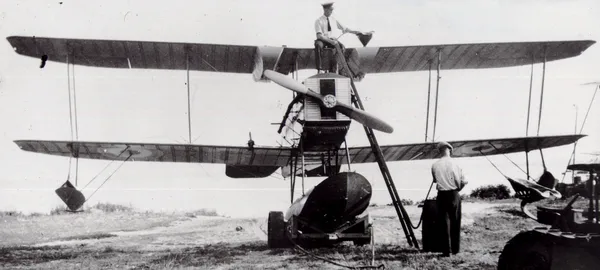The 552 AVS was created by the marrying of a modified Avro 504K airframe and wings to a war surplus SE5a 'Viper' engine creating a quite satisfactory new aircraft. Modifications included larger fuel tank and modified ailerons.
Carr-Harris, Redford McLeod (Pilot Officer)
Killed in Flying Accident 1926-August-19


Birth Date: unkown date
Born:
Parents:
Spouse:
Home:
Enlistment:
Enlistment Date: unkown date
Service
RCAF
Unit
5 Sqn- Squadron
Base
Rank
Pilot Officer
Position
Service Numbers
Crew or Other Personnel
552 AVS GCYGE
552 AVS serial: GCYGE

Avro 552A Viper SS Patrol, RCAF.
Avro 552A Viper SS Patrol AVL (5) Reg. Nos. G-CYFT "� G-CYFX, Avro 552A Viper TS Patrol AVS (9) Reg. Nos. G-CYGB to G-CYGJ, for a total of 14 aircraft.
The Avro 552 was a British light biplane aircraft produced in the early 1920s. It was another attempt by Avro to sell a derivative of the wartime 504 to the civil market. In this case, the company took advantage of the large number of war-surplus Wolseley Viper engines left over from Royal Aircraft Factory S.E.5a production. In 1921, one of these was married to a standard 504K airframe for evaluation under the designation Avro 551. Trials proved encouraging, but an extra fuel tank was installed in the upper wing as a result of the Viper's higher rate of fuel consumption, and changes were also made to the aileron design.
This configuration went into production as the 552, with the Argentine Navy purchasing 12 examples of a float-equipped version, the 552A, which served as trainers until 1927. Two similar machines were purchased by Bulgaria.
In 1924, the Royal Canadian Air Force arranged for Canadian Vickers to purchase a licence to produce five landplanes and nine seaplane examples for use in forestry patrol. These differed from British-built aircraft by the use of U.S. Naval Aircraft Factory floats, and increased fuel tankage for extended range. One of the license-built seaplanes was fitted with a Wright engine and known in Canadian service as the Avro Wright. Licensed production was also undertaken by C.B. Field of Kingswood Knoll, Surrey, England, who built three aircraft from surplus components supplied by Avro. These were flown as banner tugs by Inca Aviation until 1935.
The fuselage of the 552 prototype, G-EAPR was later used as the basis for the Cierva C.8 autogyro, but was eventually converted back to the winged configuration by a private owner when disposed of by the company. Wikipedia